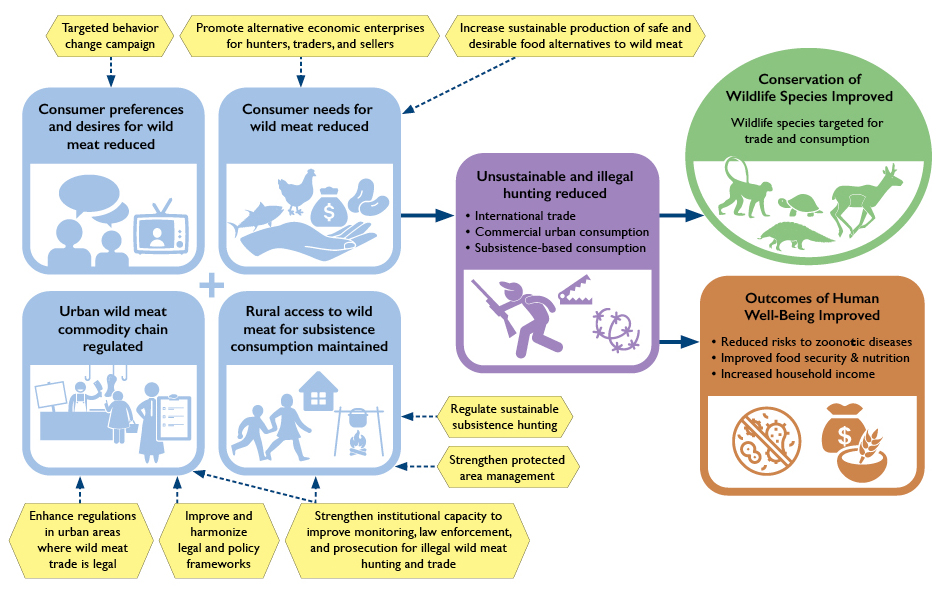Learning Agenda
Purpose and Context
The purpose of the Wild Meat Learning Agenda is to generate and share evidence to inform United States Agency for International Development (USAID) efforts to improve wild meat programming and to understand those connections to food security, health, and conservation. The Learning Agenda defines learning questions and associated activities to address those questions.
Framework: Theory of Change
The Learning Agenda is framed around a theory of change that presents a hypothesis of expected results leading from USAID’s engagement with wild meat programming to improve conservation and health outcomes. The theory of change and its associated learning questions are a framework to help teams plan for, learn about, and adapt their wild meat, health, and food security programming. The learning questions seek to understand the context, test the assumptions, and define and monitor key characteristics of an expected result.
The theory of change highlights four main outcomes that project teams seek to achieve to reduce unsustainable and illegal wild meat.
- Consumer preferences and desires for wild meat reduced: The use of behavior change methodologies to reduce consumer preferences and desires for wild meat to reduce sales of wild meat products and ultimately help to mitigate unsustainable and illegal hunting of wildlife for consumption
- Consumer needs for wild meat reduced: The provision of alternative food and economic enterprises to reduce reliance on wild meat for food and income.
- Urban wild meat commodity chain regulated: Strengthening regulations and enforcement actions to increase the risks for wildlife crimes, and therefore reduce sales of illegal wildlife products and risks to emergence of zoonotic diseases.
- Rural access to wild meat for subsistence consumption maintained: Strengthening community management of local areas, as well as protected area management and regulating sustainable subsistence hunting to maintain local access to wild meat for subsistence consumption in rural areas.
Figure 1: This wild meat theory of change is that IF consumer preferences, desires, and needs for wild meat are reduced, the urban wild meat commodity chain is regulated, and rural access to wild meat for subsistence consumption is maintained, THEN unsustainable and illegal hunting of wild species will be reduced. A reduction in hunting improves the viability of wildlife species and improves human well-being outcomes, including reduced risks to zoonotic diseases, improved food security and nutrition, and increased household income.


